AZ900: Microsoft Azure Fundamentals
Cloud Computing
Cloud Models
In this article, we explore different cloud models through the lens of Bella Innovation’s journey to secure its sensitive and proprietary design data. Bella Innovation relies on cutting-edge cloud technologies to overcome challenges related to data security, scalability, and cost-efficiency. Let’s dive into the details of the private, public, and hybrid cloud models.
Private Cloud
Bella Innovation handles valuable confidential data that must remain secure at all costs. To meet stringent security requirements, they are evaluating a private cloud solution—a dedicated, secure environment hosted inside their own data center. This model offers complete infrastructure control, allowing customization to meet both operational and security needs.
In a private cloud, Bella Innovation is responsible for managing and securing every layer of the infrastructure, including hardware, software, and platform services. This approach eliminates reliance on external providers, ensuring that sensitive data is isolated from vulnerabilities inherent in shared resources.

With full data center-based control, Bella Innovation enforces high levels of data security and operational performance without ever exposing critical data to the public internet.

In summary, private cloud solutions empower organizations with strict security requirements to protect and manage proprietary data at the highest standards.
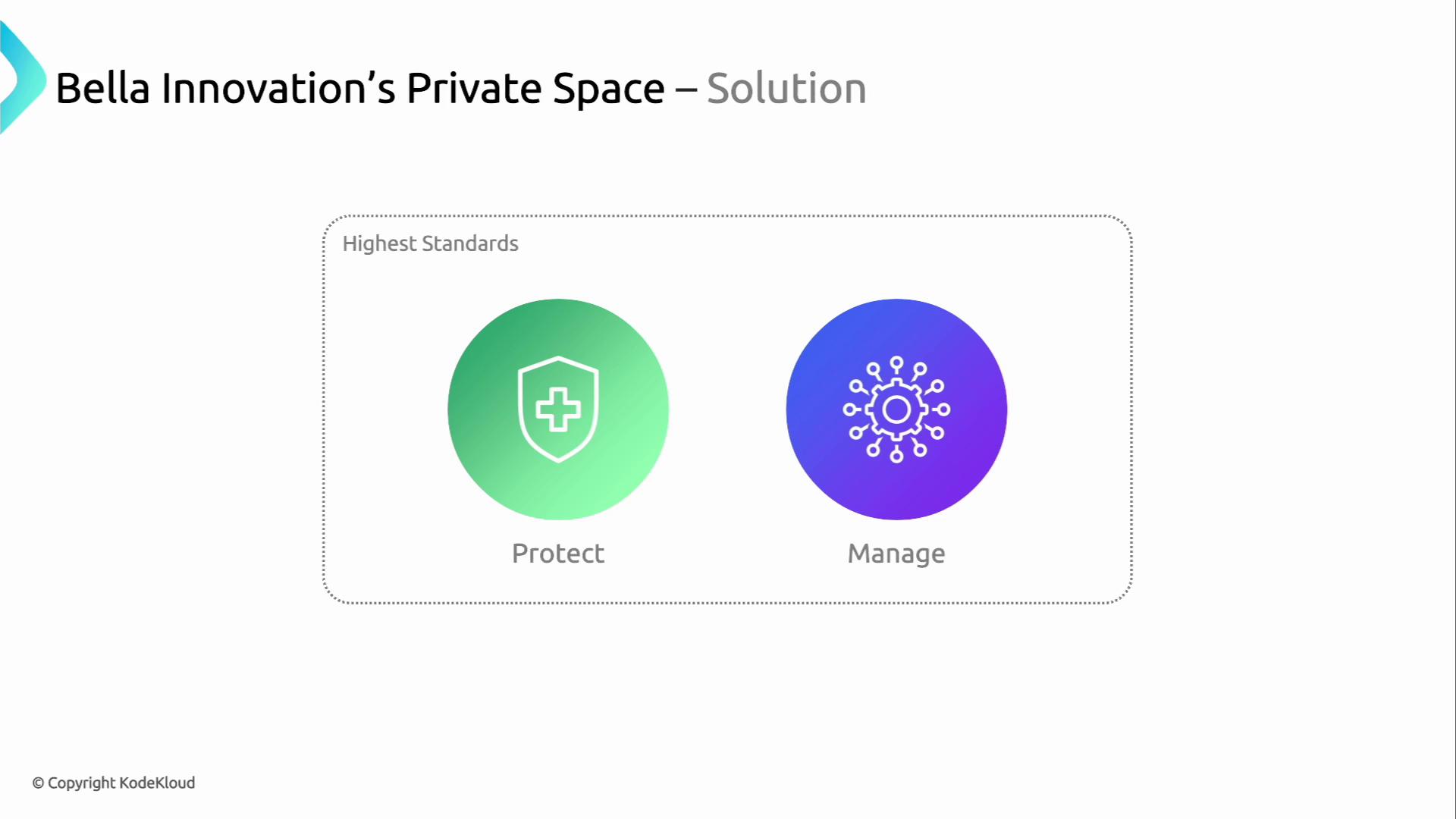
The private cloud is synonymous with privacy and security, acting as a digital fortress for Bella Innovation’s critical services.
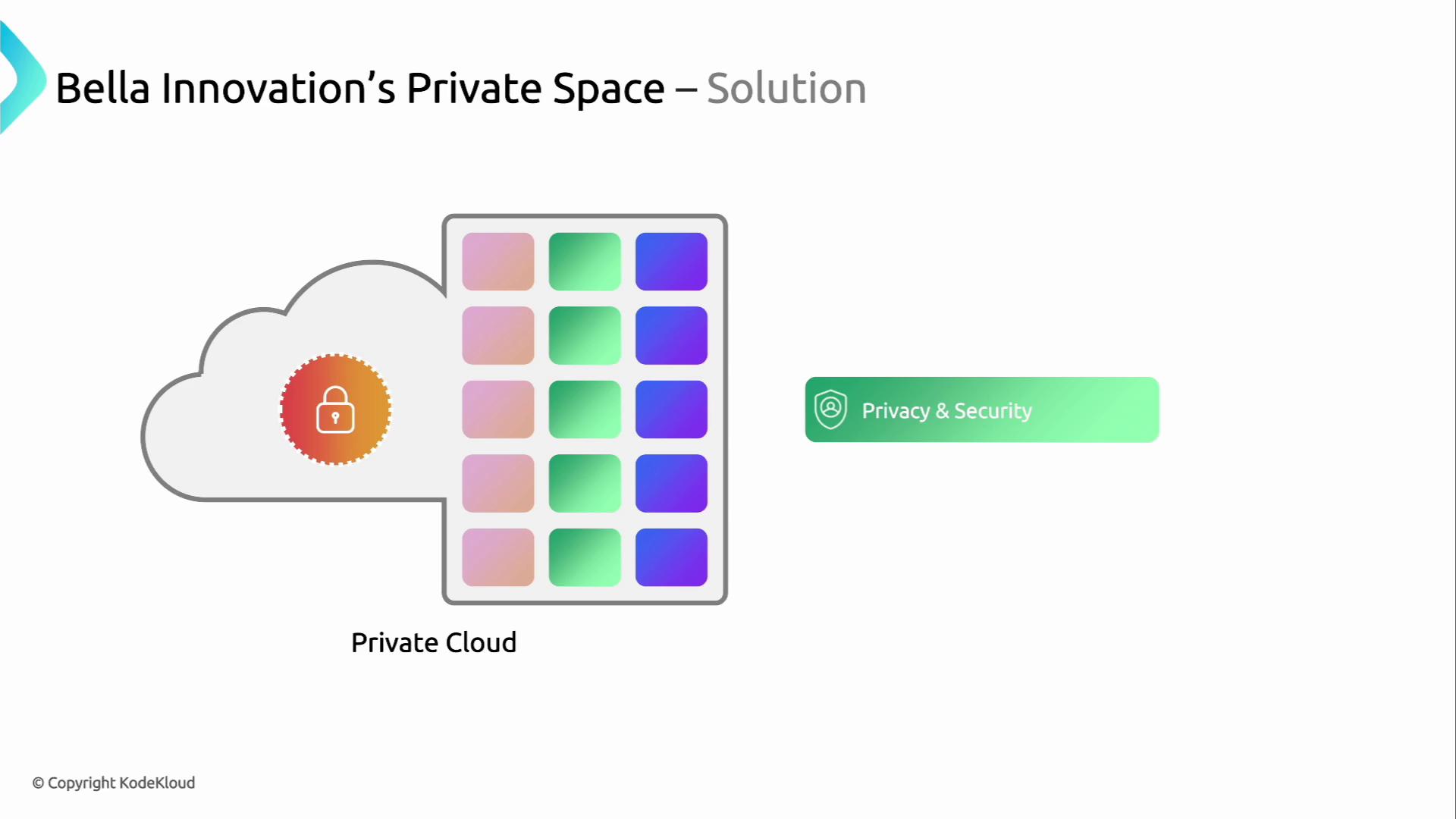
By maintaining strict control over their infrastructure, Bella Innovation ensures that its proprietary design data remains secure and under tight control.
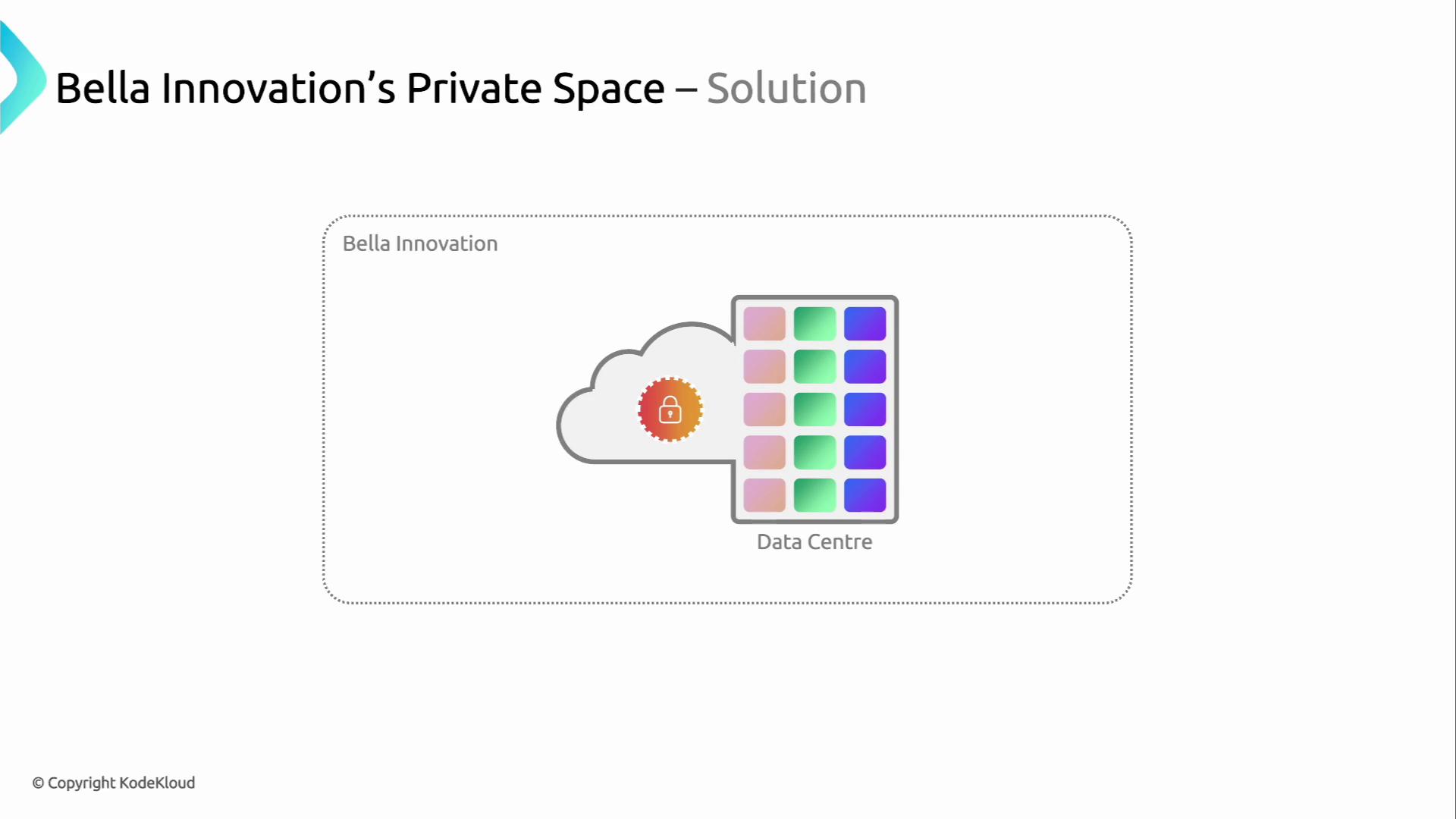
Public Cloud
As Bella Innovation prepares to launch a groundbreaking product, they need to scale resources quickly and manage unpredictable traffic spikes. Public cloud services provide a robust solution by offering virtually limitless resources that can be scaled up or down with just a few clicks.
Unlike the private cloud—where Bella Innovation owns and operates infrastructure—the public cloud is managed by third-party providers such as Microsoft Azure, Amazon Web Services, or Google Cloud Platform. In this multi-tenant model, data is securely isolated even while utilizing shared hardware resources. Users access these services through secure internet interfaces like the Azure Portal, which facilitates rapid deployment and dynamic scaling.
Key benefits of the public cloud include:
- No upfront capital investment.
- Rapid provisioning and scalability.
- A pay-as-you-go pricing model for cost-efficiency.
This streamlined approach allows Bella Innovation to deploy applications using any internet-connected device without managing complex physical hardware.
Hybrid Cloud
Despite the advantages of both private and public clouds, Bella Innovation faces a dual challenge: protecting sensitive data and achieving scalable, flexible operations for customer-facing services. The hybrid cloud addresses this by merging the benefits of both environments.
The hybrid cloud enables Bella Innovation to:
- Keep sensitive data secure within a private cloud.
- Leverage the scalability of a public cloud for applications that experience variable demand.
- Seamlessly migrate applications and workloads between environments based on specific operational needs.
This approach ensures high security and performance while maintaining regulatory compliance and cost efficiency.
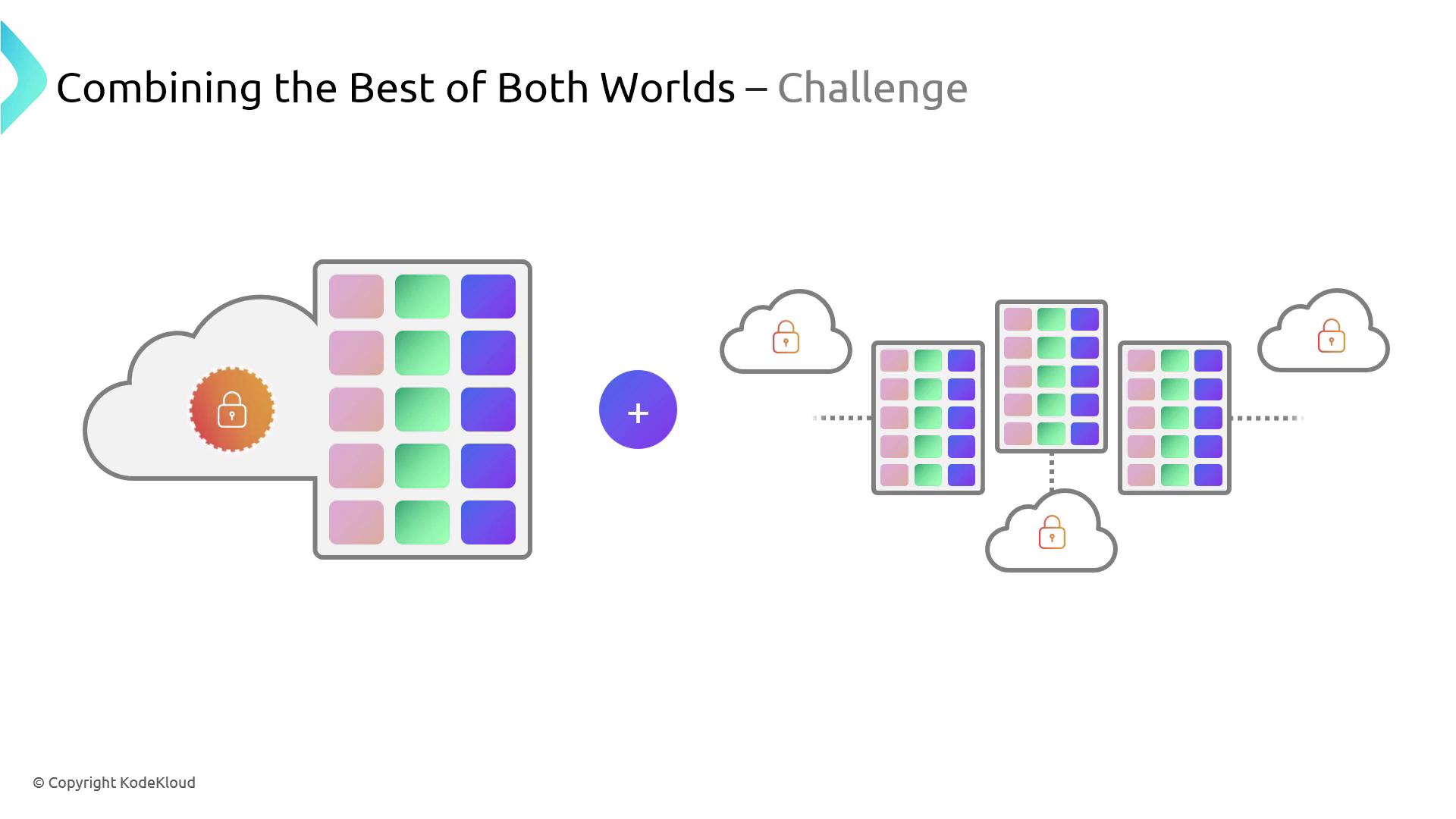
A hybrid cloud model offers the flexibility to optimize the placement of diverse workloads, balancing the robust security of on-premises solutions with the dynamic scalability of public cloud services.
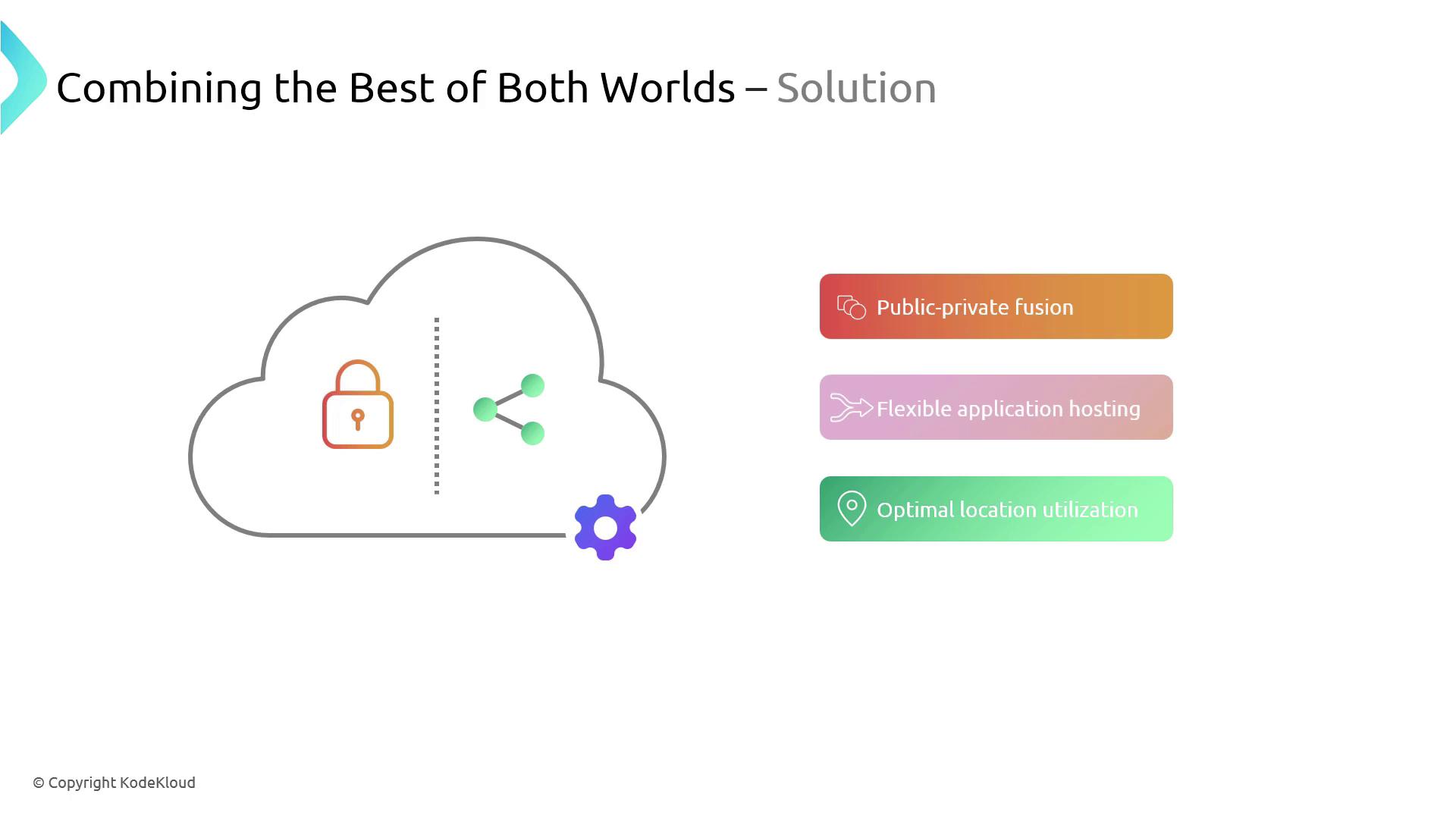
Comparing Cloud Models
Below is a comparison of the three cloud models—public, private, and hybrid—to help determine which fits various business requirements.
Public Cloud
- Cost Efficiency: Eliminates capital expenditures with a pay-for-what-you-use model.
- Rapid Provisioning: Enables quick deployment and scaling.
- Accessibility: Easy access via any internet-connected device.
For example, initiating public cloud services like Azure requires only a computer or tablet with an internet connection—no additional hardware is needed.
Private Cloud
- Dedicated Infrastructure: Resources are exclusively allocated to the organization.
- Enhanced Security: Sensitive data is managed internally with tailored security measures.
- Full Control: The organization is fully responsible for hardware maintenance and updates.
Deploying a private cloud involves significant investments in hardware, networking, and environmental controls such as air conditioning and security.
Hybrid Cloud
- Versatility: Combines the benefits of public and private clouds.
- Strategic Placement: Sensitive data remains secure on-premises while scalable applications use the public cloud.
- Organizational Governance: Balances stringent security with operational flexibility.
This strategic approach allows Bella Innovation to allocate workloads efficiently: critical data is protected in the private cloud, while customer-facing services benefit from the rapid scalability of the public cloud.
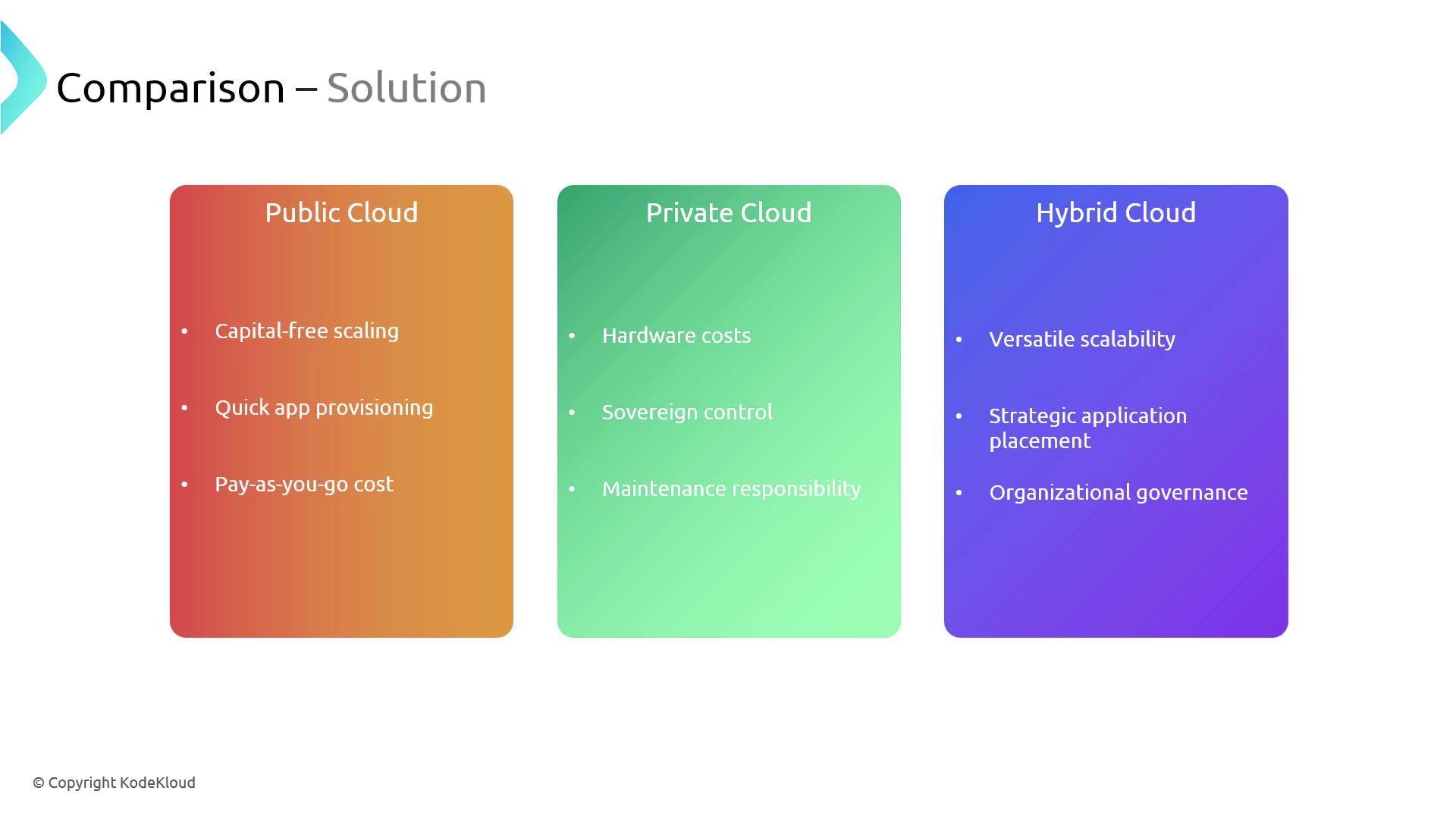
Setup Complexity
The setup complexity of each cloud model varies:
Public Cloud: Simple and cost-effective setup with minimal hardware requirements. A laptop and an internet connection are all it takes.
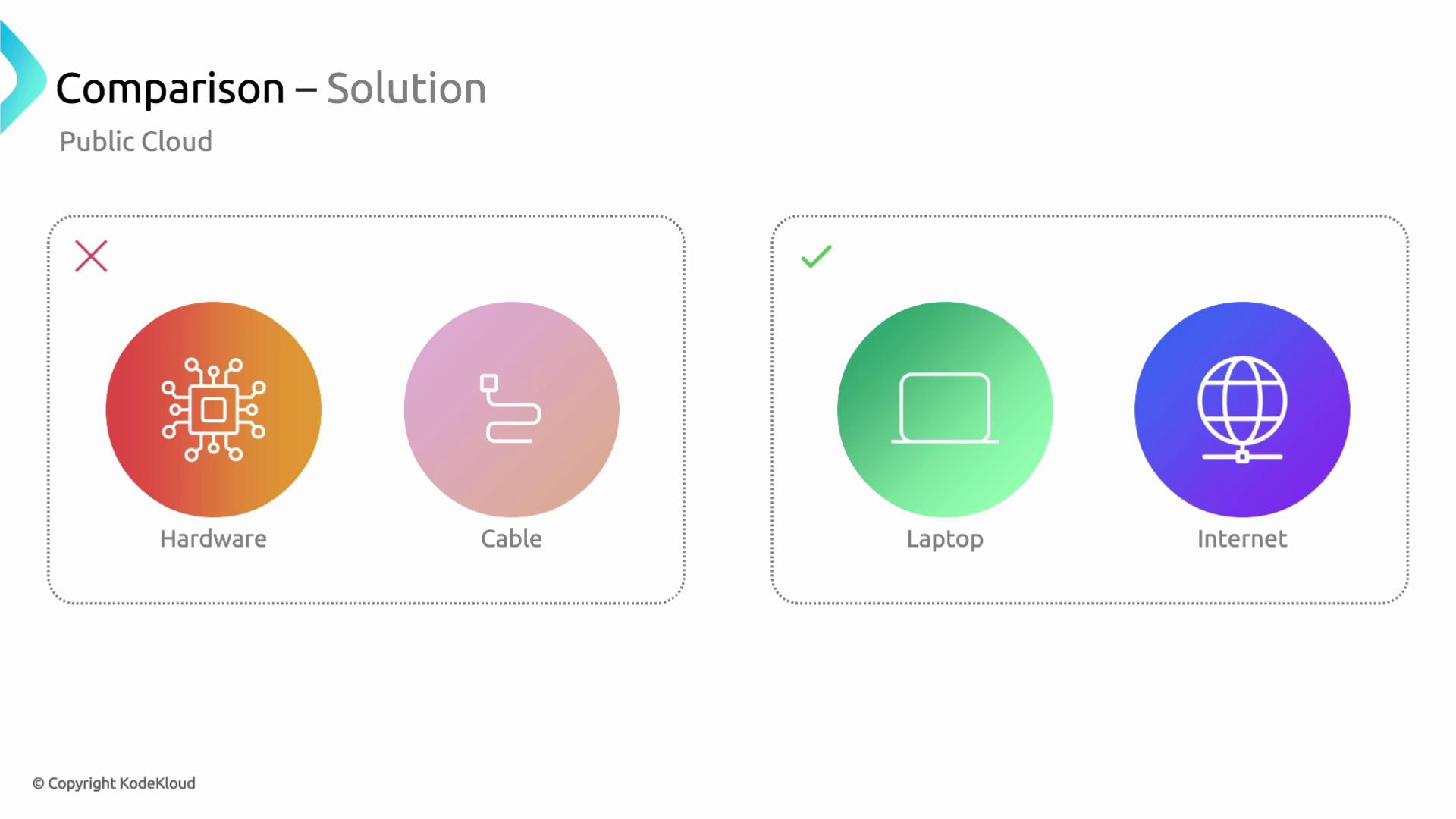
Private Cloud: Involves significant infrastructure investments, including hardware, networking, cabling, and cooling systems, resulting in a more complex setup.
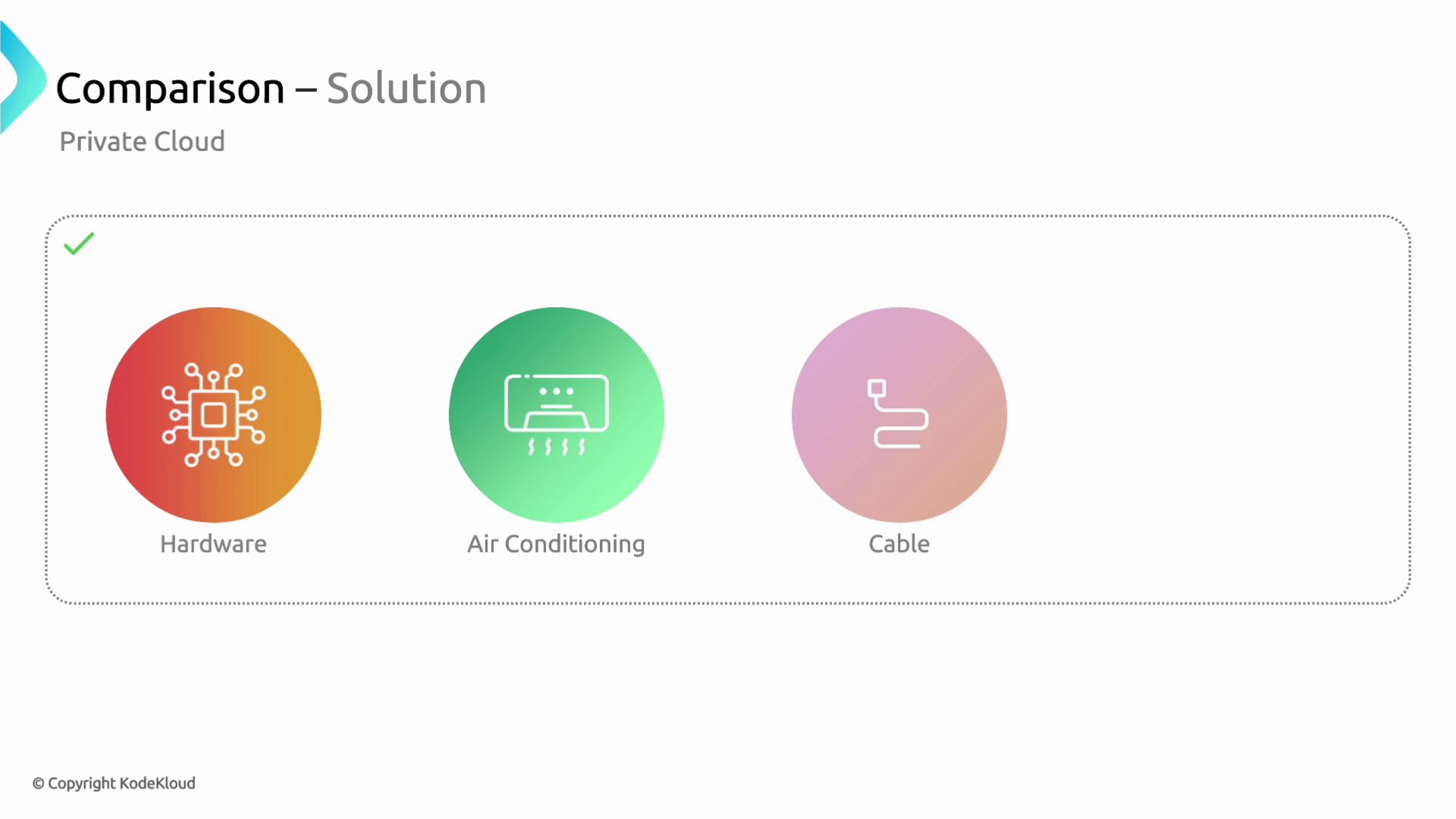
Hybrid Cloud: Combines elements of both public and private clouds. While it leverages the scalability of the public cloud, it also inherits some of the setup complexities of a private cloud. Integration requires thoughtful planning and management.
Note
When deciding among cloud models, factors such as security requirements, scalability needs, and budget constraints play a critical role. Evaluate each model carefully to align with your business objectives.
Conclusion
Bella Innovation’s evaluation of cloud models reveals that:
- A private cloud is ideal for safeguarding sensitive, proprietary data.
- A public cloud provides the scalability and cost benefits required for dynamic, customer-facing applications.
- A hybrid cloud offers the best of both worlds—ensuring robust data security while accommodating growth and flexibility.
By comparing these models, businesses can determine the optimal cloud strategy to achieve high performance, fortified security, and efficient cost management while driving innovation.
For additional insights into cloud computing trends and best practices, be sure to explore related resources on the Microsoft Azure Fundamentals documentation page.
Watch Video
Watch video content